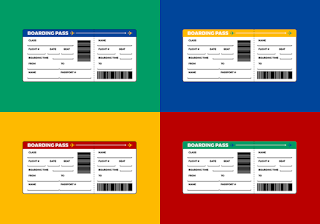Part 1 - Protecting Your Digital Self
How can someone hurt you if they manage to get hold of photos of your holiday or a tweet about your political views? Let's explore some scary scenarios, but also give you tips on avoiding leaving the digital breadcrumbs which lead to your digital self.
First, a little bit of background on how adversaries use open source and free tools to gather information about you. You can also play the bad guy, against yourself, to uncover how much of your data is out there that you were not aware of.
OSINT (Open Source Intelligence)
Malicious actors have been using specially crafted tools to collect information (like the police have search tools across a number of databases) and data companies collect so much information about us that a lot of free tools (OSINT) can be used to collect that information. So, what does an innocent individual have in their arsenal to defend himself? Knowing what information is out there using OSINT tools.
I’ve tried some of those techniques with my clients to prove how an individual can be targeted and profiled online with cybersecurity tools. Some of my customers have realised how easy is to get hold of that information and started being more aware.
Digital Footprint
Your digital footprint comprises every e-mail you’ve ever sent, every post you’ve shared on social media, or every picture you’ve taken and uploaded to the cloud.
You know what they say about the internet, once it’s online, it can never be completely erased. Your digital footprint also contains everything you aren’t aware that you’re doing online. For instance, every time you agree to let a website store your cookies and digital information or your IP address gets stored somewhere, you’re adding to your digital footprint. One way to think about your digital footprints is to categorise them as either “active” or “passive”:
- Passive footprints are those you leave behind without intending to, or in some cases knowing. For instance, websites that collect information about how many times you have visited in the recent past are adding to your digital footprint in a passive fashion. You don’t choose to hand them this data, they collect it when a device at your IP address connects with their websites. Because this is a hidden process, you may not realise it is happening at all.
- Active footprints are those you leave when you make deliberate choices on the Internet. Posts you make to your own social media channels are a well-known form of the active footprint. When you are logged into project management or a similar site, changes you make that are connected to your login name are also part of your active footprint.
How to find yourself in 3 steps
1. Enter your name into several search engines like google, bing or yahoo or if you want to be hidden use duck duck go etc… if you want to know what an individual without log-in knows about you use google chrome in hidden mode.
2. Use our search tools like ThatsThem or InstantCheckmate or BeenVerified or check what is on your social media using FB People Directory or Facebook E-mail Search if you just have a personal e-mail (yours).
3. Check the location you’re sharing on social media with Creepy or how much you’re sleeping Facebook Sleep Stats
Some consequence of identity theft
A good example story of a person who got his identity stolen Bennett Arron and made a stand-up of it.
Identity profiling can lead to very targeted phishing campaigns and ultimately result in damage to companies and individuals.
Burglars target households when people are away. How do they know? Simply watching social media activity.
A fraudster can collect information from a bank account using the statement that you trash. They can call you and impersonate the bank. In those case always hang up and call directly the bank number.
In my next article I will explain how you can fix this…



Comments
Post a Comment